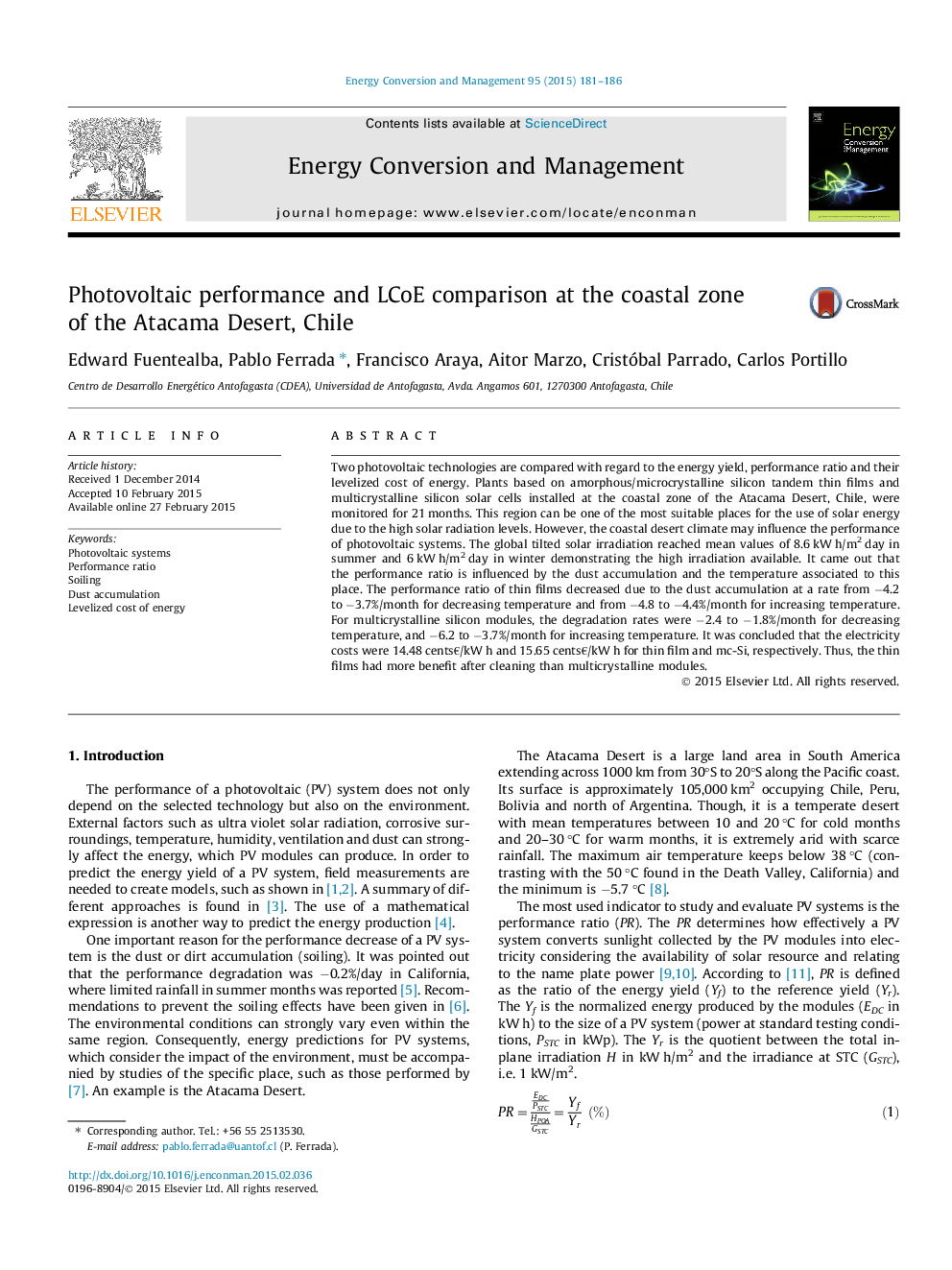| Article ID | Journal | Published Year | Pages | File Type |
|---|---|---|---|---|
| 765464 | Energy Conversion and Management | 2015 | 6 Pages |
•Two PV technologies installed at the coastal zone of Atacama Desert were studied.•The energy yield improved up to 16% after cleaning.•The monthly performance ratio was determined and analyzed for a 21 month period.•The dust accumulated on modules produced a fall of the monthly performance ratio.•The Levelized Cost of Energy (LCoE) was calculated for a dirty and clean condition.
Two photovoltaic technologies are compared with regard to the energy yield, performance ratio and their levelized cost of energy. Plants based on amorphous/microcrystalline silicon tandem thin films and multicrystalline silicon solar cells installed at the coastal zone of the Atacama Desert, Chile, were monitored for 21 months. This region can be one of the most suitable places for the use of solar energy due to the high solar radiation levels. However, the coastal desert climate may influence the performance of photovoltaic systems. The global tilted solar irradiation reached mean values of 8.6 kW h/m2 day in summer and 6 kW h/m2 day in winter demonstrating the high irradiation available. It came out that the performance ratio is influenced by the dust accumulation and the temperature associated to this place. The performance ratio of thin films decreased due to the dust accumulation at a rate from −4.2 to −3.7%/month for decreasing temperature and from −4.8 to −4.4%/month for increasing temperature. For multicrystalline silicon modules, the degradation rates were −2.4 to −1.8%/month for decreasing temperature, and −6.2 to −3.7%/month for increasing temperature. It was concluded that the electricity costs were 14.48 cents€/kW h and 15.65 cents€/kW h for thin film and mc-Si, respectively. Thus, the thin films had more benefit after cleaning than multicrystalline modules.
